ICAST Impressions Part II
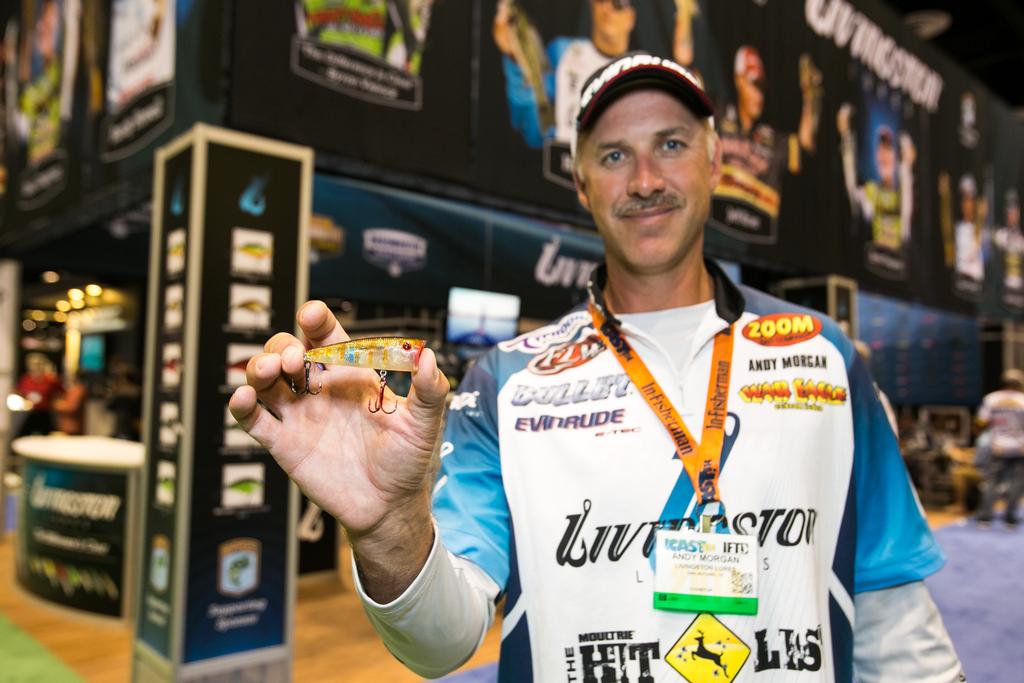
In part one of this two-part recap of trends from the 2014 ICAST show, we shared our observations of the electronics, terminal tackle, accessories, line and clothing categories. In this installment, we’re moving on to reels, rods, tackle storage and soft plastics.
For complete coverage of the show, including our full recap of the most prominent trends in hard baits (an explosion of topwaters and bigger, badder lures), visit flwfishing.com/ICAST.
Lighter, Stronger and Faster Reels
By Kyle Wood
Over the past few years the trend in bass fishing lures has shifted toward the go-big-or-go-home mentality – crankbaits dive deeper, swimbaits have gotten longer, spoons have been mega-sized, etc.
Ultimately, this industry-wide lure upsizing has forced rod and reel companies to expand their lineups to help manage larger baits. At the 2014 ICAST show, their efforts became apparent with the introduction of stronger, lighter and faster reels.
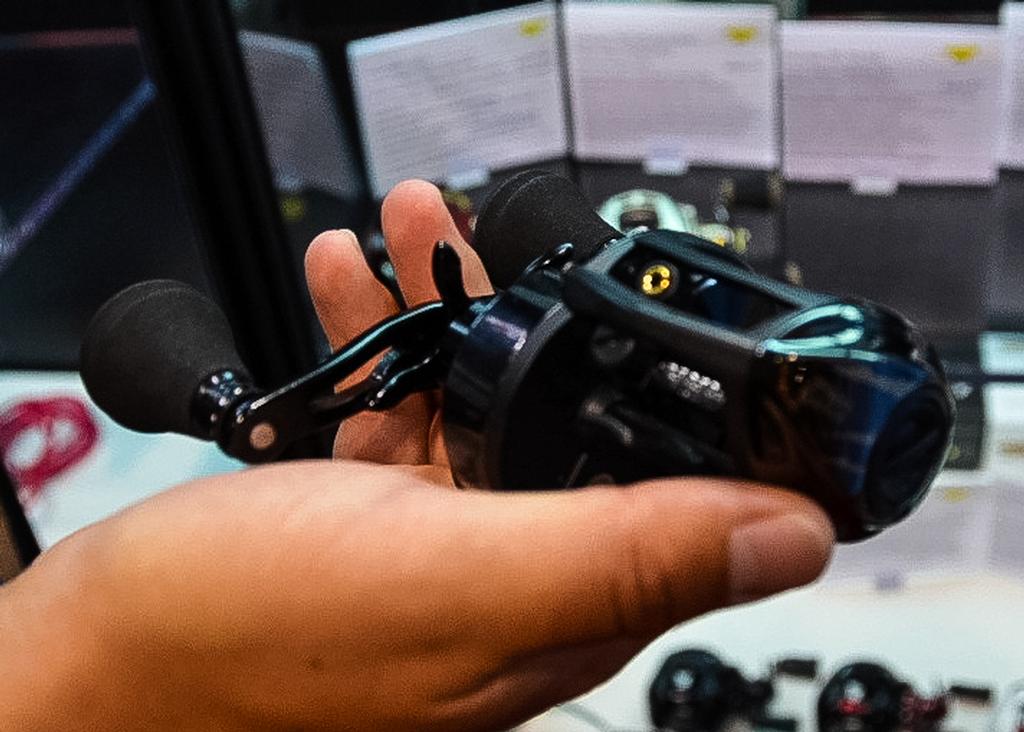
Abu Garcia unleashed the Revo Beast, which won the New Product Showcase award for Best Freshwater Reel. The Beast is intended to offer anglers a better reel for chunking large spoons, massive crankbaits or magnum swimbaits. An oversized handle and knobs, as well as beefed-up “guts” and a fast retrieve speed, make the Beast, well, a beastly reel for big baits.
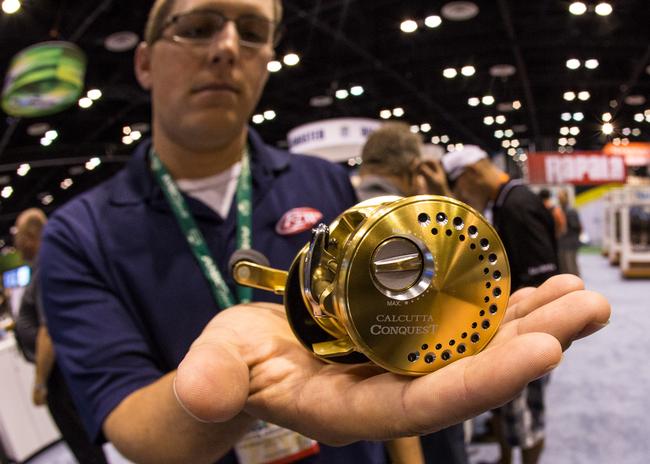
Shimano also released a workhorse of a reel in the Calcutta Conquest. The Calcutta name has long been applied to round-body reels that can take a beating by big-game anglers and keep on ticking, and now the Conquest will help bring that same reputation to the bass world. Though it has a slower gear ratio than some low-profile reels, the Conquest will certainly be a top pick for anglers looking to throw oversized offerings.
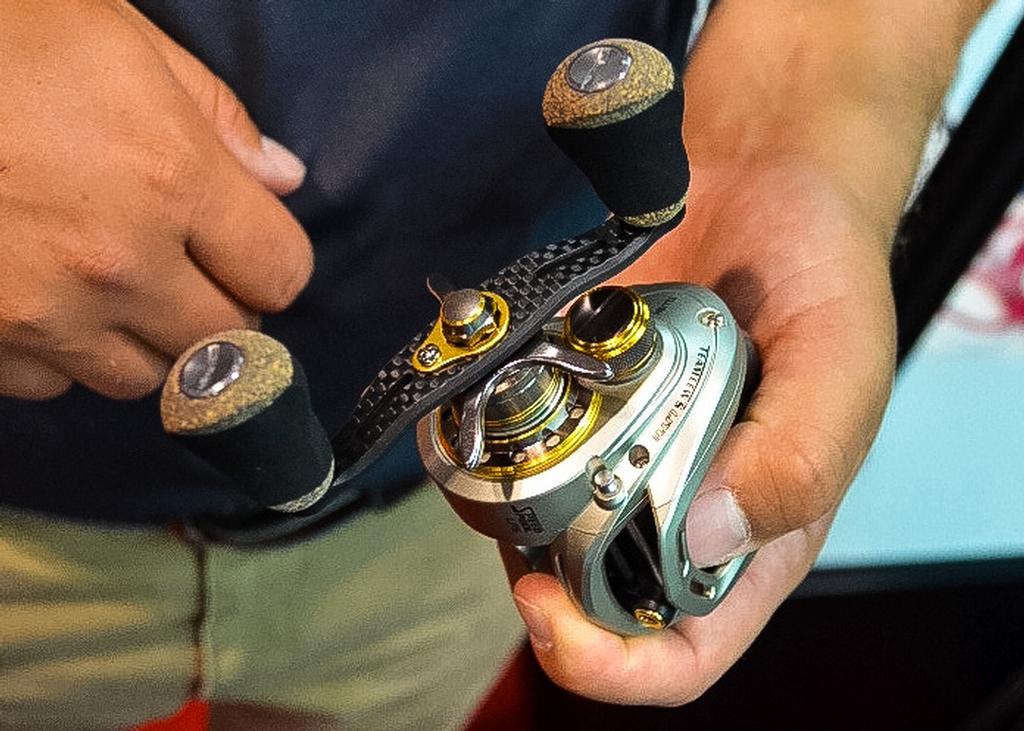
Going light was the theory behind a new reel from Lew’s – the Lite LFS (Lighter Faster Stronger). It weighs a feathery 5.7 ounces and brings a custom look to a stock product. Another company to lighten the load was 13 Fishing with the Concept KP. It tips the scale at just 5.14 ounces and again brings the custom look to a retail reel. The only problem with some of the new feather-light reels is the higher price tag. Most will go for $250 or more, depending on the company.
If it’s speed you want then you’re in luck. One major push from the majority of reel manufacturers was to build reels with blazing gear ratios. Reels with 8:1 gear ratios are set to roll out from Quantum, Lew’s and Okuma. Abu Garcia and Daiwa released similar products earlier in 2014. From burning crankbaits to flipping and everywhere in between, picking up line in a hurry is a major benefit to anglers, and reel companies are welcoming that with open arms.
Reels are at a point now where you can match your reel to virtually any technique you wish to use and be primed for success. Speed, toughness and weight are all part of the technique-specific reel movement that parallels the bait industry. Who knows where the future trends in bass fishing will head, but you can certainly bet that there will be a reel ready and capable to fish everything new that companies roll out.
Better Boxes for Storage
By David A. Brown
There’s no denying it – I get that kid-in-a-candy-store giddiness at every ICAST. The biggest challenge always seems to be balancing my reporting notes with my personal wish list compilation.
Related thought: You have all these new baits and tackle components, now where are you going to put them? Well, there were several new soft-sided gear bags from companies like Simms, Eagle River and The 3 Legends (named for the legendary trio of Jimmy Houston, Roland Martin and Bill Dance) that caught my eye.
However, I was impressed with a couple of rigid tackle containers that provide the solid forms that facilitate truck and boat packing.
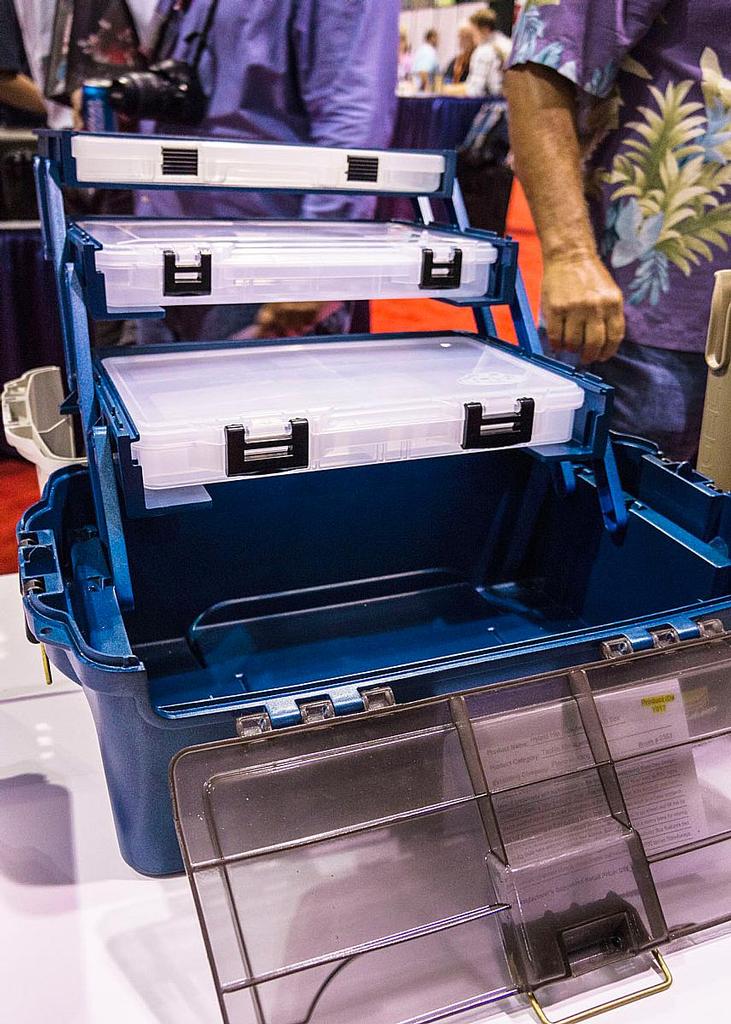
First is the Plano Hybrid Hip box – a well-planned container with a throwback vibe complemented with the modern logistical wisdom pulled from the medical field. Trauma boxes – those potentially life-saving containers that first responders carry – must be packed with multiple pieces of all those items needed to care for folks in dire situations. They also have to be well-organized, lest confusion and frantic searches cost the EMTs valuable time.
Plano took that concept and turned it into a tackle box that fosters efficiency with expanding tiered shelves that hold either slotted tackle trays or 3700 StowAway boxes. The Hybrid Hip features a top-opening design for complete expansion and access to interior space, along with a drop-down front door that also accesses the trays or StowAways.
Providing two ways to reach your tackle, along with a couple of see-through storage trays built into the lid, gives anglers easy reach to what they need in a form that stands up straight no matter how much or how little it holds.
“This box has that familiar three-tiered configuration, but it allows you to remove the trays or the StowAway boxes to clean and dry your tackle,” adds Plano pro-staffer Eric Hataaja. “All the tools you need are accessible to you.
“The ability to replace the trays or the StowAways gives you a lot of versatility,
Hataaja adds. “You might want to use a certain set of tackle in the morning and then do something different in the afternoon. Well, this box allows you to change those items without having to pack another tackle box.”
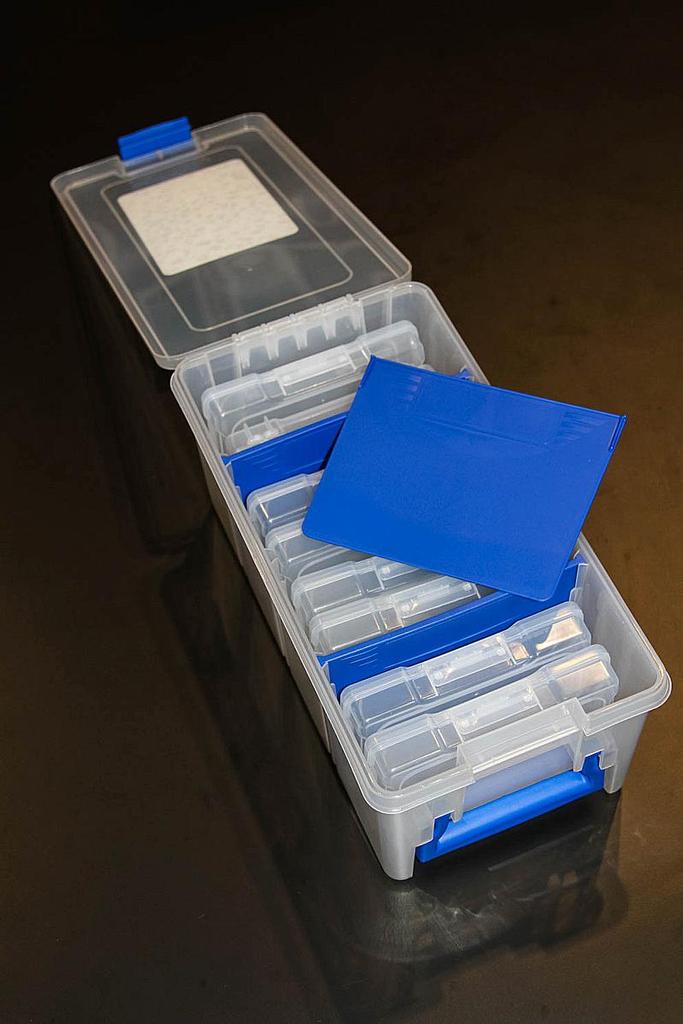
Flambeau introduced a simple, yet effective system for tackle tray management with its Terminal Tackle File Satchel. I like this one because it eliminates the common struggle of finding plastic storage bins that are sized just right for your favorite tackle trays.
Flambeau’s satchel comes with eight Open Core Boxes, dividers protected by Zerust and a set of adhesive labels that allow you to write your own system of content identification. A latching lid keeps the collection secure, while handles facilitate transport.
High-Tech Soft Baits
By David A. Brown
ICAST lasts just three days, but taken in relevance, I think it is interesting to ponder the backstories, motivations and thought processes that led to the array of new products released to the sport-fishing industry this week.
The soft-plastics category that I covered revealed a handful of notables that caught my eye with their creativity and innovations. Tops would have to be the Z-Man Pop ShadZ – a soft-plastic popper with good detail and the ability to go where other poppers dare not go.
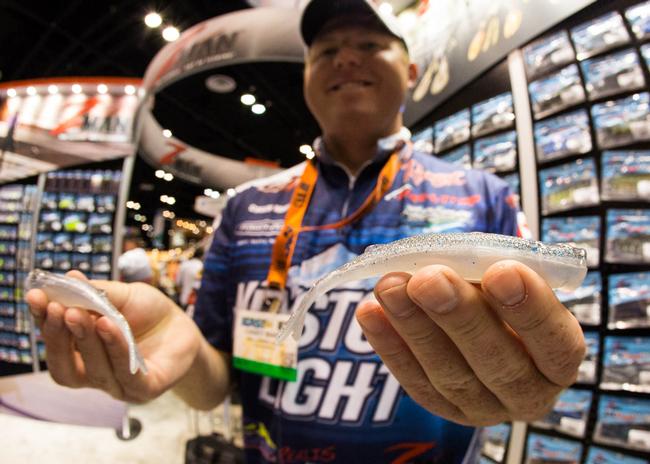
“Conventional topwaters have treble hooks, so you can only fish them in certain areas; you can’t fish them over grass or lily pads,” says Tour pro Casey Martin. “This bait is different. You can rig it with a 5/0 to 6/0 hook, and it actually has a walking style but also spits water. So it’s perfect for where you’d fish a frog.
“One thing I like about this bait is that you have a better hookup ratio than a traditional topwater frog,” Martin adds. “Also, it’s made with Z-Man’s ElaZtech material, so it’s very durable and won’t tear up.”
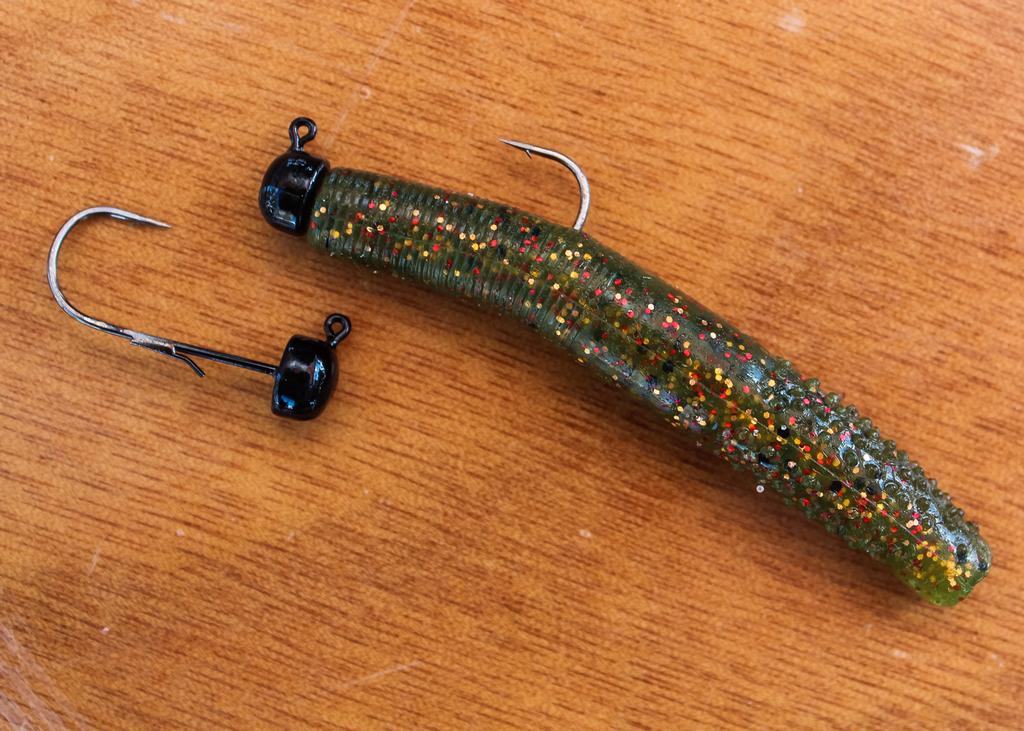
Z-Man also introduced a 2 3/4-inch Finesse T.R.D. (The Real Deal) – essentially a scaled-down version of its popular ZinkerZ stick worm, with some texture enhancements. For years, anglers have bitten off sections of ZinkerZ for small finesse presentations, but now the T.R.D. offers a tiny soft-plastic stick bait that’s ready to roll right out of the bag. Maybe Z-Man was concerned about the impacts of its ElaZtech material on tooth enamel, but it was a handy move anyway.
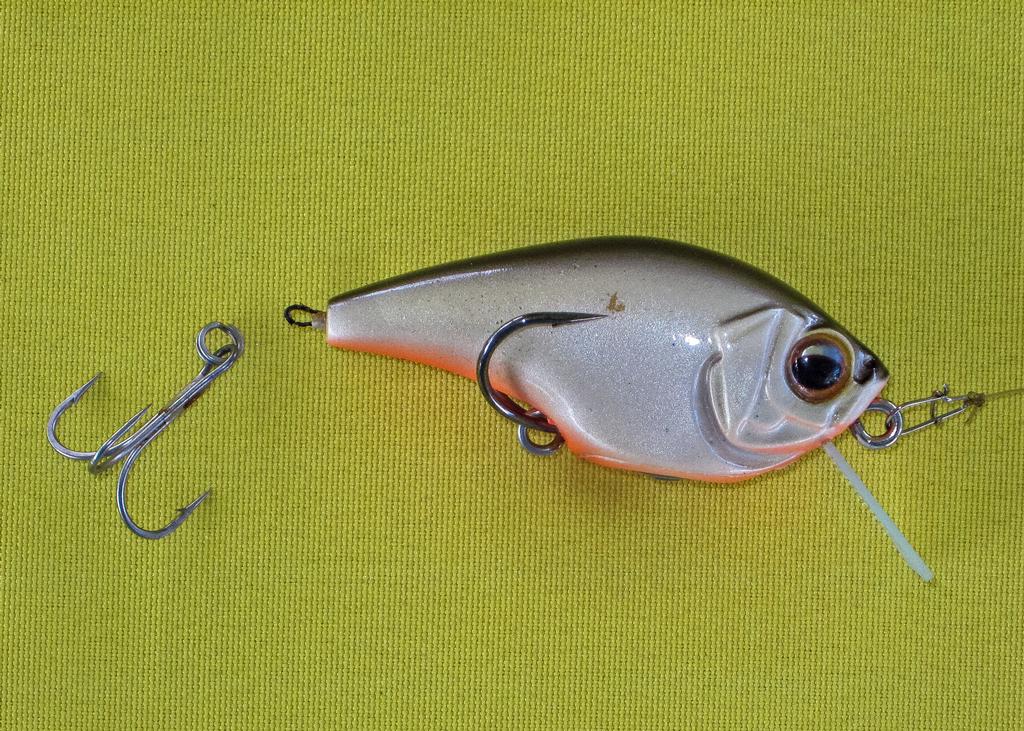
Also impressive was the Kahara KJ Crank, which combines the soft body and double hook common to a topwater frog with the bill of a square-bill crankbait. The result is a bait that can hunt along the bottom, but will also pull easily through light vegetation.
I watched this bait in action during pre-ICAST testing, and it slides through grass with ease. I like that the bait includes a rear attachment point that accommodates a treble hook for open-water applications
Some companies turned to unique shapes for their new releases. For example, Imakatsu debuted the Gill Bone – a soft-plastic flipping/pitching bait made to resemble a fish skeleton with a solid, narrow neck for hook placement.
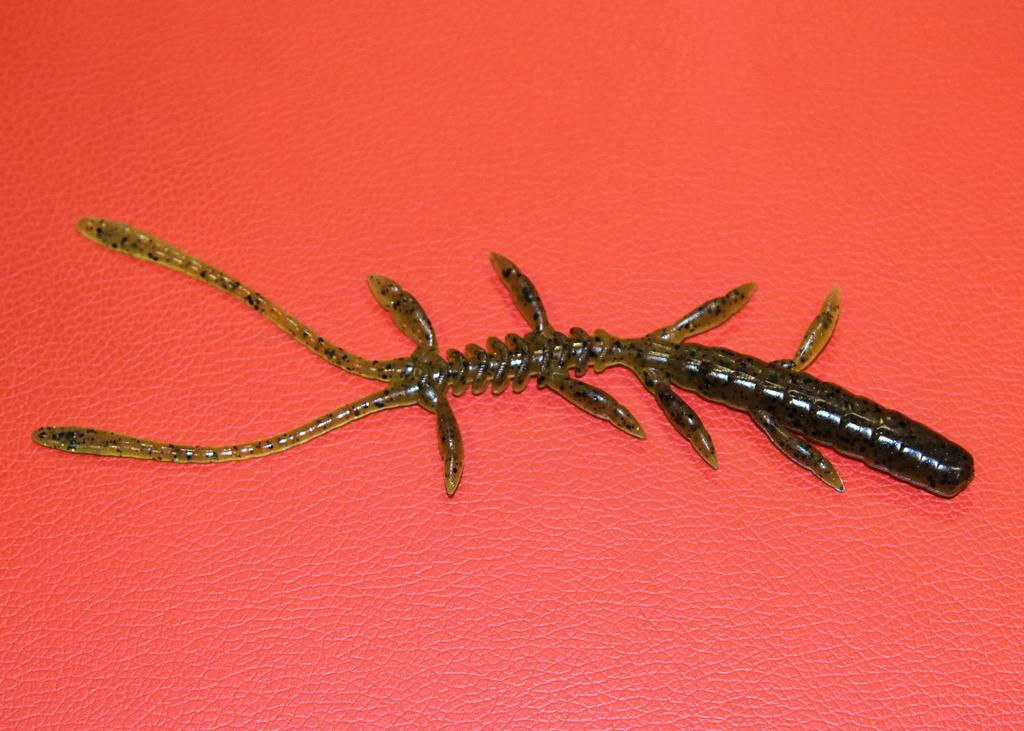
Elsewhere, if a traditional lizard mated with a creature bait, their offspring would probably resemble the Jackall Scissor Comb. Long and slender, this motion-heavy bait features lanky antennae and four pairs of short legs that face forward. The legs grab water for a constant shimmy that’ll drive fish nuts on a Texas or Carolina rig.
"The way those little appendages are positioned, they'll cause the bait to wiggle more," said Repel pro Cody Meyer, who staffed the Jackall booth all week.
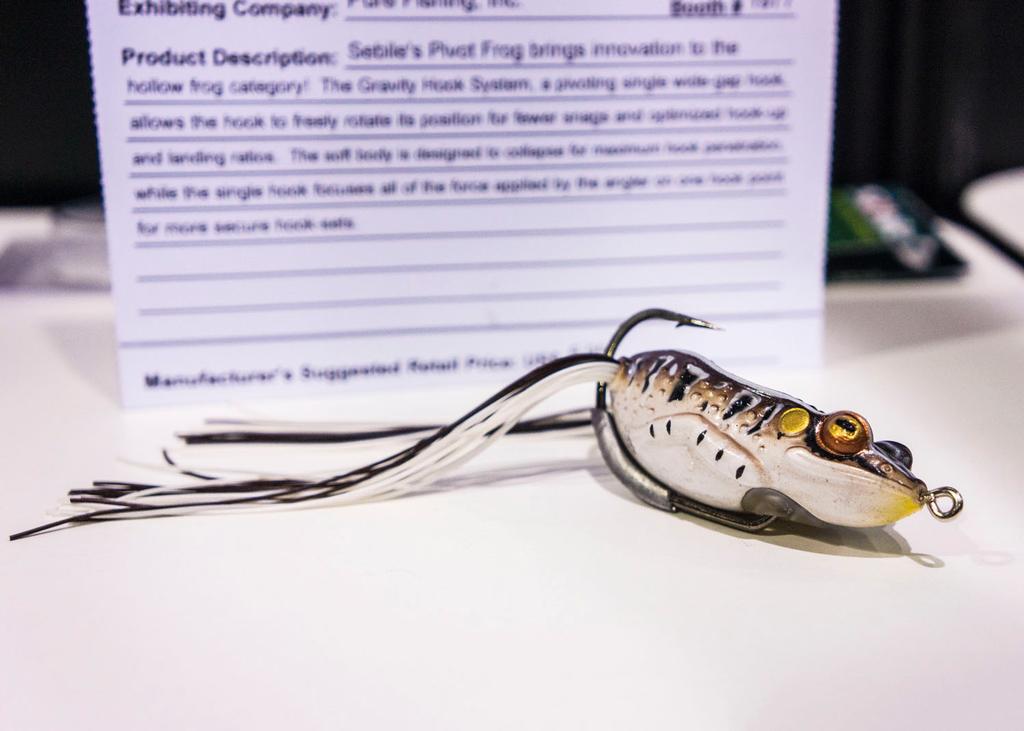
Sebile is always one to watch for innovations, and the company’s new Pivot Frog did not disappoint. Replacing the standard double hook with a single weighted hook that pivots upward on the strike instantly increases the potential for better hookups by creating that all-important gap between the plastic and the hook.
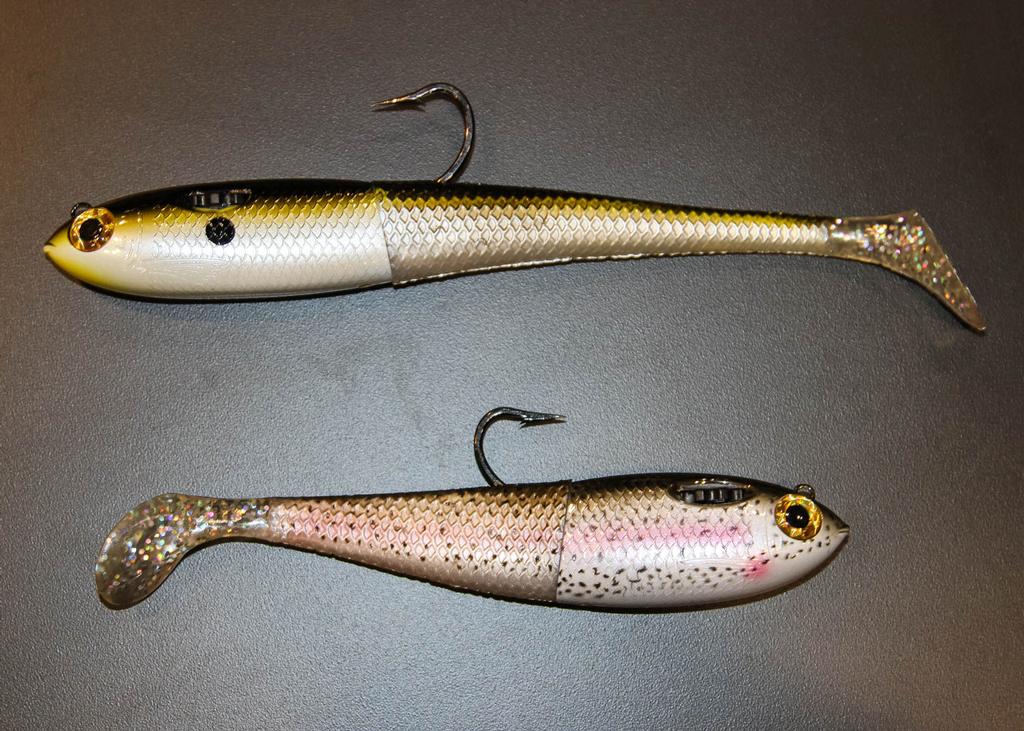
Lastly, I liked the SpoolTek swimbait (6- and 9-inch models), which features a soft, active tail that links to a solid ABS head. The head contains a spool wound with a heavy leader that’s connected to a single J-hook. On the strike, pressure from the fish releases the spool’s tension device and allows the foot-long leader to play out behind the bait. This eliminates the fish’s ability to leverage the mass of a large lure body to throw the hook.
To sum: There’s a lot of thought and ingenuity behind this year’s soft-plastics lineup, and we all stand to benefit from the results.
New Classic Rods Re-Launch
By Jeff Samsel
Something old. Something new.
It seems this was the year of the re-launch in the rod category, with several major companies introducing reworked versions of existing rod lines. Re-launches and upgrades allow companies to capitalize on those classic names and retain the general styling or favored attributes of those standards, while at the same time upgrading materials or hardware.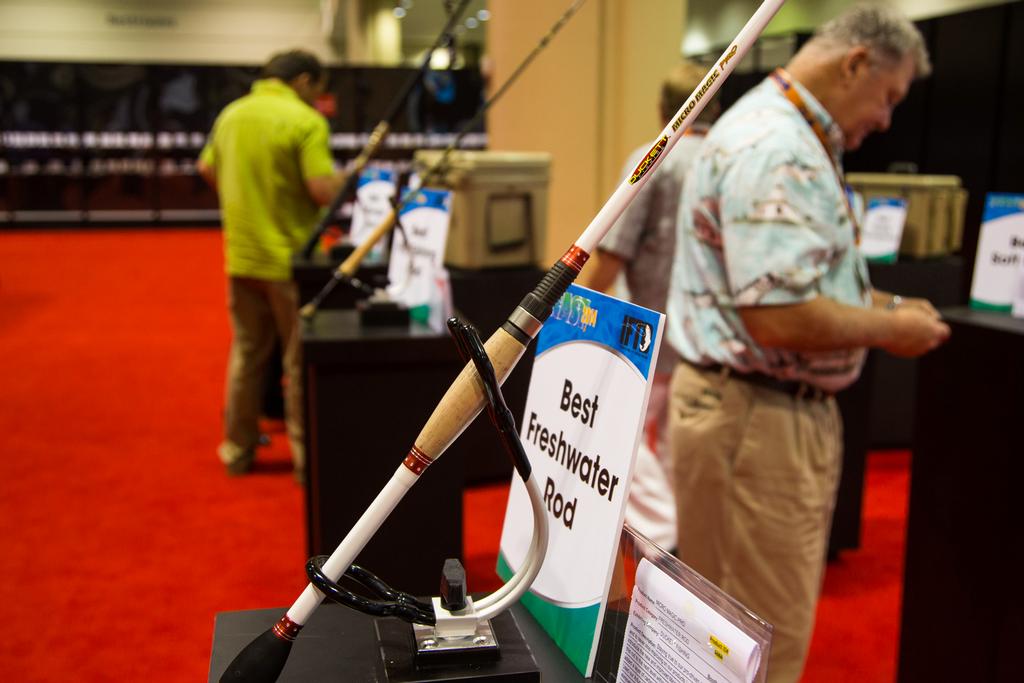
The facelifts actually begin with the New Product Showcase Best Freshwater Rod winner. Duckett Rods, though not very old, has gained great customer loyalty through its pro-driven rod-building philosophy. Duckett introduced improved versions of its Micro Magic Pro Series. The rods look quite a bit like the old ones and incorporate many of the same actions, but the blanks are stronger and lighter.
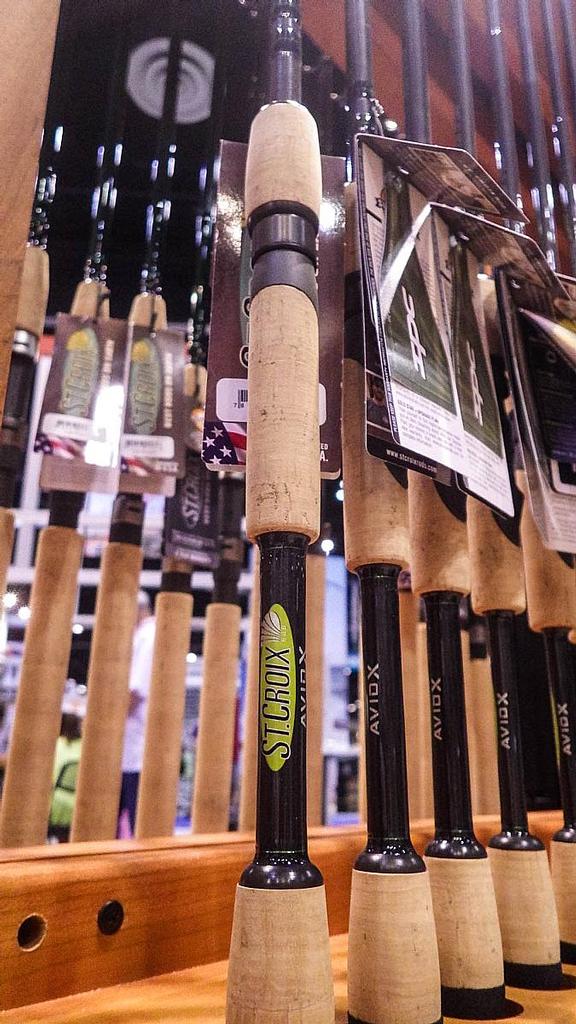
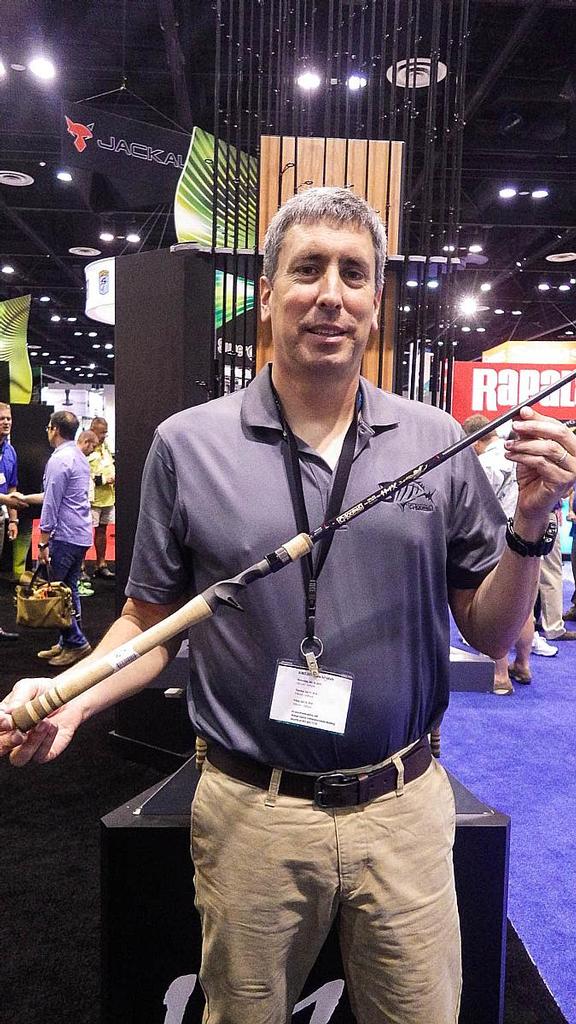
A similar story can be told for the Fenwick EliteTech Series and a couple of Denali rod series, plus some absolute industry standards such as the G. Loomis IMX and Abu Garcia Veritas. Each has been upgraded with materials and/or hardware.
In other cases, new rod series were introduced as extensions of established favorites. Examples include the new Ugly Stik Elite Rods, which use a higher blend of graphite to create a lighter rod while retaining Ugly Stik toughness, and the St. Croix Avid X rods, which are built with Avid blanks but have an upgraded line-guide system and handle.
Of course, whether a rod series is brand new or builds on some type of rod heritage, new technologies continue to be incorporated to improve performance. The catchwords you hear again and again as you walk the ICAST floor and visit rod manufacturers are “lighter,” “stronger,” “more sensitive” and “more durable.” And it isn’t just trade show talk. From the materials and processes being used to make blanks, the types of components used to complete them and the design factors that engineers continue to figure out, each year’s rods truly are lighter, stronger, more sensitive and more durable than those of the previous generation.
Other trends I took note of included more discussion about Japanese technology with various top-end rods and a greater emphasis on creating rods in the $100 to $200 price range that truly have a top-end look and feel.
One thing is for certain: If you’re looking for a new rod next year, you’ll have a lot of really good options.